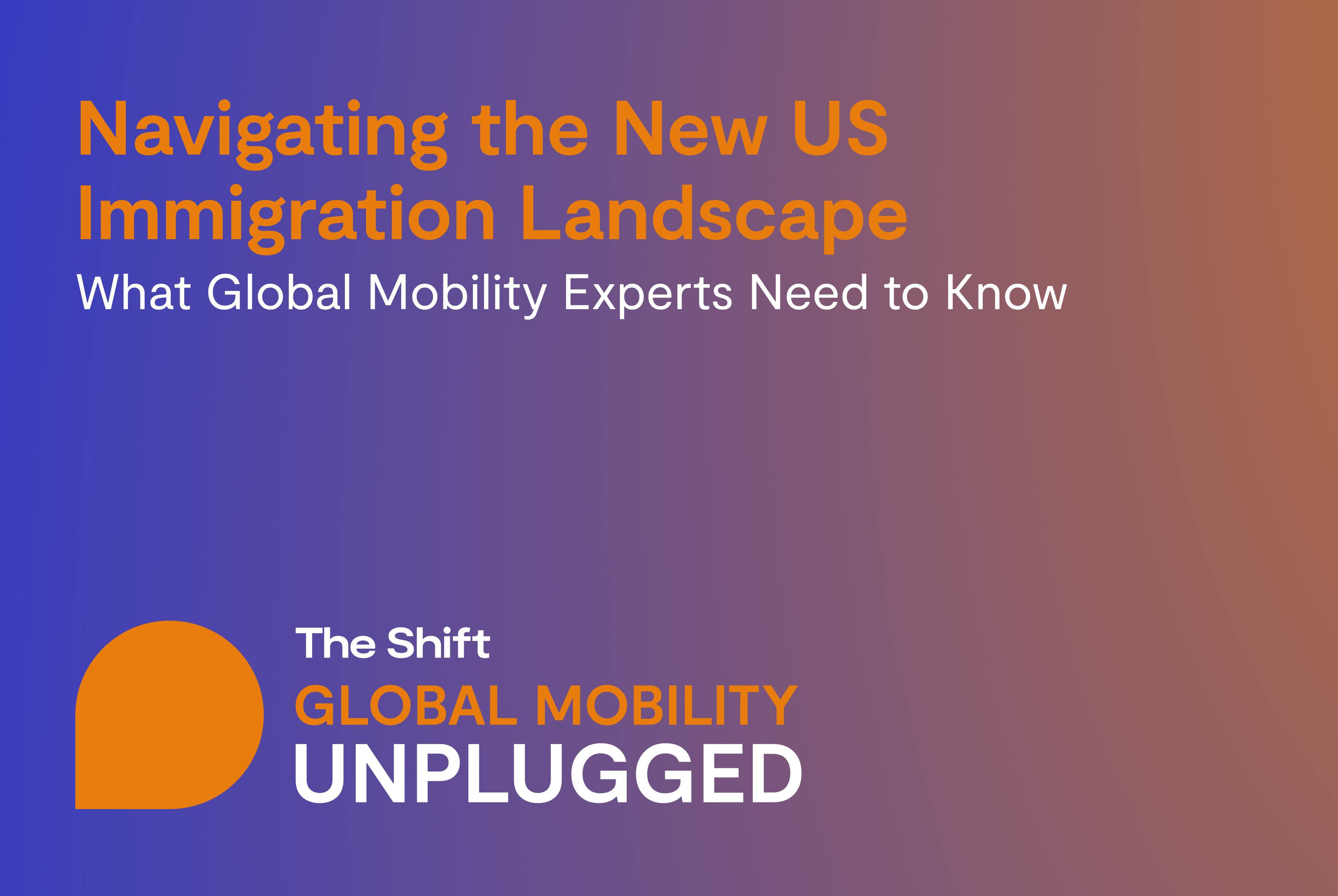When the new United States administration took office on January 20th 2025, anyone who followed immigration policies knew to expect rapid changes to US policies. Staying ahead of these changes is key to remaining both competitive and compliant in an evolving immigration landscape.
To help Global Mobility and HR professionals navigate these rapid developments, Localyze hosted the first The Shift: Global Mobility Unplugged on How to Navigate the New US immigration Landscape —a webinar featuring a panel of experts to discuss what to expect in the coming months.
The webinar’s speakers included Hanna Asmussen, CEO & Co-Founder of Localyze; Sharon Lion, International Mobility Director; Carolyn Volovsek, Director, Global Mobility & Immigration at Cox Automotive Inc.; and Dennis Hul, Supervising Immigration Counsel at Boundless Immigration.
This blog provides a summary of key insights from the discussion and actionable takeaways to help companies prepare for what lies ahead.
US immigration policy changes 2025: What to know and expect
Visa Opportunities for Highly-Skilled Talent: O-1 and National Interest Waiver
The landscape of U.S. immigration for highly-skilled workers is evolving, with changes in visa processing for specialized talent. While the volume of immigration-related news may seem overwhelming, key visa options—such as the O-1 Extraordinary Ability Visa and the National Interest Waiver—remain viable pathways for attracting top global talent.
The O-1 visa has seen greater inclusivity of STEM fields but has an expanded criteria for evaluating an applicant’s contributions. Startups will need to better demonstrate how an individual’s success aligns with the company's achievements. Additionally, the focus on whether a role requires unique skills or expertise within a given occupation makes this an important option for employers looking to retain top-tier professionals.
H-1Bs: Stricter Eligibility and Rising Competition
For companies relying on the H-1B visa, competition remains high. Last year, nearly 758,000 registrations were submitted, with selection rates dropping as more businesses enter the lottery. A recent shift to using employee passport numbers for registration has helped reduce duplicate applications, yet demand still far exceeds availability, with only a 24.8% selection rate. Employers should prioritize registering eligible employees for the H-1B lottery as early as possible. Prevailing wage requirements also remain a challenge, with Department of Labor (DoL) wage levels reflecting salaries from three years prior—meaning companies must plan for higher salary expectations to meet compliance standards. While no major executive actions have changed the H-1B cap or lottery process under the new administration, experts are watching closely for potential reforms.
Processing Delays and Compliance Hurdles
These will continue to impact global mobility strategies. For instance, visa stamping in Canada and Mexico remains challenging, with appointment backlogs and limited availability. Additionally, administrative processing—often triggered by security checks—can extend timelines from weeks to several months, affecting visa renewals and work authorization.
Lastly, with immigration laws struggling to keep up with modern workforce trends, companies need to navigate outdated regulations, such as physical job posting requirements for Permanent (PERM) labor certifications. With heightened scrutiny and potential green card processing slowdowns, employers must work closely with their in-house HR and global mobility teams to establish long-term strategies.
Practical takeaways: Step Global Mobility experts can take now
In response to these rapidly changing policies, panelists shared their practical insights and tips on how other Global Mobility experts can prepare accordingly. Here are 5
1. Centralize and update your documentation for effective compliance management
All four speakers discussed the importance of maintaining compliance documents in an easily accessible electronic system. If immigration officials visit the workplace — or a work-from-home employee’s house and third-party sites — it’s critical that visas and other immigration documents can be quickly retrieved.
2. Prepare an adaptable action plan for official immigration visits
Employers should develop an action plan in case there are immigration officials visit. Outline your organization’s policies and procedures for such events, and define how much the company will participate in the process. It’s better to have a plan prepared than to figure it out in the middle of the process.
3. Look to alternative visa types and sponsorship programs
The H-1B skilled worker visa returned to the news in January 2025, with much debate on its merits and discussion on prevailing wage requirements. Experts expect standards for H-1B visas to increase under this new administration, or its use might be limited. Sharon and Carolyn mentioned the importance of looking at other visas or revisiting sponsorship programs that might help keep foreign employees working in case their visa status changes.
4. Develop mitigation strategies for labor shortages
All four panelists discussed how US labor shortages are likely to get worse as a result of the new policies. If relocating talent to the US is no longer an option or becomes overly complex, companies should consider mitigation strategies. This could include hiring temporary or contract labor or utilizing offshore/near-shore talent and consulting partnerships.
5. Support international employees when they’re traveling abroad
What do you do if employees can’t return to the US? Experts expect that there may be instances of international employees being unable to return to the US after traveling. During the 2017-21 administration, some employees were effectively stuck in limbo as their immigration papers were placed under review. Panelists emphasized the need for contingency plans in situations like this. Will you place an affected employee on unpaid leave? Perhaps switch them to be a contractor or move them to a different corporate entity? What is your company policy in terms of who covers the costs? Again, having a plan now is better than figuring it out under pressure.
What to do next
This is only a small excerpt of the insights and helpful tips featured from this latest webinar. If you are interested in hearing more about the topic, watch the full webinar today.
